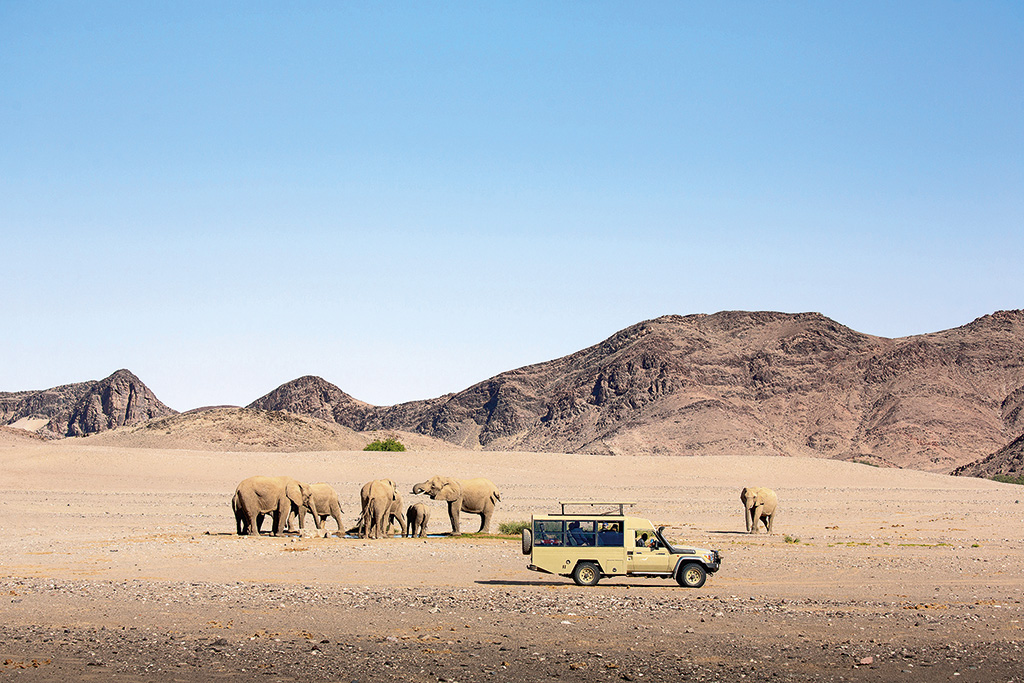My guide from Wilderness Safaris’ Hoanib Skeleton Coast camp, Herunga Ngwapia, knows his desert elephants. He parked our safari vehicle beneath a sand dune and warned me to get prepared. I adjusted my exposure and set my composition – just in time.
A herd of elephants poured over the lip of the dune in a cloud of dust, coming straight towards the vehicle. Herunga clapped his hands, warding off the matriarch just before she reached our 4×4. The stream of elephants diverted and when the dust settled, our hearts continued to pound – what a beautiful sight!

Desert ellies have longer legs and larger feet. They eat water-laden plants along ephemeral riverbeds and can survive for days without direct water.
The mammals along the Skeleton Coast seem to be prettier than elsewhere. Elephants are smaller, with rounded foreheads and big eyes, and the lions have handsome faces and untarnished, sand-coloured coats.
Animals out here have changed both behaviour – the critically endangered black rhinos have become largely nocturnal – and physique in order to adapt to water and food scarcity. To the ignorant visitor, life here seems impossible. But make it the animals do, and it’s a privilege to see them in this desolate landscape, defying the odds of survival.
Plan Your Trip
Stay Here
Hoanib Skeleton Coast Camp has eight large tents and a pool. From R11,875 per person sharing all inclusive. wilderness-safaris.com
Palmwag Lodge and Campsite, on the Uniab River in northwest Damaraland, offers an affordable option with good game-viewing in the Palmwag Concession. R2,270 per person sharing for DBB or camping for R270 per person. palmwaglodge.com
You may also like
Related Posts
Driving over the Berg River on Carinus Bridge, you’d probably dismiss Velddrif as just another...
read more
The tips of our fingers tell the story of who we are. Those faint undulating...
read more
Many parents across the world have opted out of traditional governmental and even private schooling...
read more